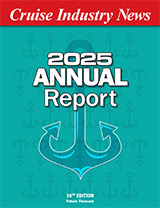Once facing a shortage of future officers, economic factors in Italy and poor employment opportunities shoreside have led to an increase in the number of applications to nautical schools.
The training has become more demanding, with new criteria targeting a quality labor force aboard ships.
“Due to the type of school we are, we have been subjected to audits by the EMSA (European Maritime Safety Agency) to verify our application of international guidelines in nautical instructions,” said Dr. Lidia Diana Gallucci, principal of the Leone Acciaiuoli in Ortona Italy.
The school has recently received financing from the Ministry of Public Education to upgrade the training ship San Tommaso with new equipment such as an ECDIS system.
The students come from various backgrounds, all hoping to one day rise to the rank of captain on a major cargo or passenger vessel.
“The sea has always fascinated me,” began Giacomo Consentino, a student in his final year of school. “I have always had a strong interest in the maritime sector that led me to target my studies to this sector.”
For students the challenges don’t stop when they receive their degree; competition for the attractive jobs is the next hurdle, and then comes the career ladder.
Maritime training in Italy is essentially split between two levels. One for nautical schools and the other for maritime academies, the latter of which trains cadets to become future senior officers.
The Accademia Italiana Marina Mercantile concentrates on training navigation and engine cadets.
“We accept around 100 to 120 cadets annually,” said Eugenio Massolo, president of the academy. “The selection process includes tests on technical subjects, the English language and aptitude. We generally start with a pool of somewhere between 500 to 600 young people.”
Excerpt from Cruise Industry News Quarterly Magazine: Summer 2015



